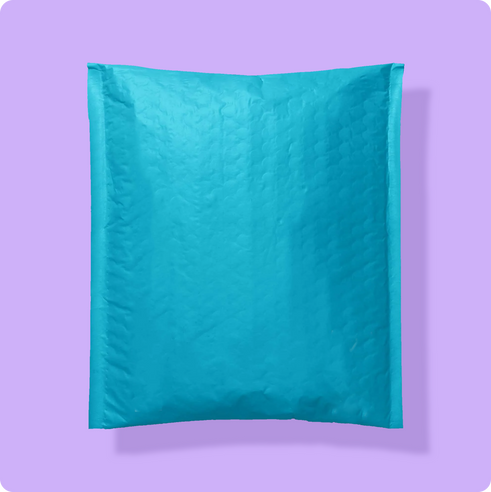Packaging 101: The Complete Guide
- Packaging 101
- Types of Packaging
- Aseptic Packaging
- Blister Packaging
- Biodegradable Packaging
- Bulk Packaging
- Carbon Neutral Packaging
- Circular Packaging
- Clamshell Packaging
- Compostable Packaging
- Cornstarch Packaging
- Corrugated Packaging
- Discreet Packaging
- Ecommerce Packaging
- Flexible Packaging
- Frustration Free Packaging
- Retail Packaging
- Secondary Packaging
- Smart Packaging
- Sustainable Packaging
- What is a PR Package?
- What is a Poly Mailer?
- Packaging Design Ideas
- AI Packaging Design
- Bakery Packaging Ideas
- Bath Bomb Packaging Ideas
- Bath Salt Packaging Ideas
- Body Butter Packaging Ideas
- Body Oil Packaging Ideas
- Body Scrub Packaging Ideas
- Brownie Packaging Ideas
- Cake Packaging Ideas
- Cake Pop Packaging Ideas
- Candle Packaging Ideas
- Candy Packaging Ideas
- Canva Packaging Design
- Chocolate Packaging Ideas
- Cinnamon Roll Packaging Ideas
- Clothing Packaging Ideas
- Coaster Packaging Ideas
- Coffee Bag Design Ideas
- Cookie Packaging Ideas
- Cosmetics Packaging Design
- Cotton Candy Packaging Ideas
- Cupcake Packaging Ideas
- DIY Packaging Ideas
- Dog Treat Packaging Ideas
- Food Packaging Ideas
- Empanada Packaging Ideas
- Etsy Packaging Ideas
- French Fries Packaging Ideas
- Frozen Food Packaging Ideas
- Hair Extension Packaging Ideas
- Handbag Packaging Ideas
- Jewelry Packaging Ideas
- Keychain Packaging Ideas
- Lash Packaging Ideas
- Lip Gloss Packaging Ideas
- Macaron Packaging Ideas
- Minimalist Packaging Ideas
- Mug Packaging Ideas
- New Employee Welcome Kit Ideas
- Packaging Colors
- Packaging Inserts Ideas
- Packaging Logo Design
- Packaging Typography
- Perfume Box Design Ideas
- Pizza Box Design Ideas
- Popcorn Packaging Ideas
- Scarf Packaging Ideas
- Skincare Packaging Design Ideas
- Soap Packaging Ideas
- Sock Packaging Ideas
- Sticker Packaging Ideas
- Sunglass Packaging Ideas
- Sustainable Packaging Ideas
- Tea Packaging Ideas
- Wax Melt Packaging Ideas
- Weed Packaging Ideas
- T-Shirt Packaging Ideas
- Wine Packaging Design Ideas
- What is a Packaging Engineer?
- Types of Packaging Materials
- Chipboard vs Cardboard
- Compostable Packaging Materials
- Alternatives to Plastic Packaging
- Edible Packaging Materials
- Food Packaging Materials
- Are Poly Mailers Recyclable?
- How to Recycle Cardboard Boxes
- How to Recycle Packaging Materials
- Medical Device Packaging Materials
- Mono Material Packaging
- Pharmaceutical Packaging Materials
- Plastic Food Packaging
- Protective Packaging Materials
- Reusing Packaging Materials
- Types of Packaging Foam
- Void Fill Packaging
- What is Chipboard?
- What is Kraft Paper?
- Offset vs Digital Printing
- RGB vs CMYK Printing
- Screen Printing vs Digital Printing
- Screen Printing vs Sublimation
- What is a Dieline in Packaging?
- What is Die Cutting?
- What is Digital Printing?
- What is Flexographic Printing?
- What is Glassine Paper?
- What is Offset Printing?
- What is Spot UV Printing?
- Why is 300 DPI Good for Printing?
- How to Estimate Shipping Costs
- How to Pack Glass for Shipping
- How to Mail a Bubble Mailer
- How to Make a Shipping Label
- How To Measure Box Dimensions and Sizes
- How to Ship Alcohol
- How to Ship Artwork
- How to Ship Books
- How to Ship a Cake
- How to Ship Candles
- How to Ship Clothes
- How to Ship Cookies
- How to Ship Food
- How to Ship a Laptop
- How to Ship a PC
- How to Ship Plants
- How to Ship Shoes
- How to Ship Vinyl Records
- Packaging Symbols
- Shipping Large Items
- What is a Delivery Exception?
- What is Shipping Insurance?

Discover Phillip Akhzar’s journey, the Founder and CEO of Arka, bringing 16 years of expertise in packaging and supply chain logistics. Read more on Arka.
What Makes Poly Mailers Different from Regular Plastic Bags?
Poly mailers aren't just any plastic bags; they're specifically designed for shipping products safely and efficiently. Unlike regular plastic bags you might get at a grocery store, poly mailers are typically:
-
Thicker and more durable to protect contents during shipping
-
Often lined with bubble wrap or padding for extra protection
-
Equipped with adhesive strips for secure closure
-
Frequently printed with branding, shipping information, or instructions
The material composition of poly mailers varies, but most are made from one of these plastics:
-
Low-density polyethylene (LDPE, #4) - The most common material for standard poly mailers
-
High-density polyethylene (HDPE, #2) - Sometimes used for more durable mailers
-
Polypropylene (PP, #5) - Used in some specialty shipping envelopes
This material composition directly affects recyclability. LDPE and HDPE are generally more recyclable than other plastic types, but additional elements complicate the process:
-
Adhesives from sealing strips and labels can contaminate recycling streams
-
Dyes and printing inks may contain chemicals that affect recyclability
-
Bubble wrap linings create mixed materials that are harder to process
-
Dirt or product residue can render the plastic unrecyclable

The Environmental Impact of Poly Mailers
Conventional poly mailers create several environmental challenges. They're petroleum-based products that don't biodegrade naturally. When improperly disposed of, they can:
-
Take hundreds of years to break down in landfills
-
Contribute to microplastic pollution in waterways and oceans
-
Harm wildlife through ingestion or entanglement
-
Consume fossil fuel resources in their production
However, when compared to cardboard boxes for lightweight items, custom poly mailers can actually have a smaller carbon footprint during shipping because they're lighter and take up less space in delivery vehicles.
How to Recycle Poly Mailers Properly: 5 Easy Steps
Most curbside recycling programs don't accept poly mailers, but that doesn't mean they can't be recycled. Follow these steps to ensure your poly mailers get properly recycled:
-
Check if your mailer is recyclable (look for the #2, #4, or #5 recycling symbol)
-
Remove all labels, tape, and adhesive strips
-
Clean the mailer of any product residue or dirt
-
Store with other film plastics until you have a collection
-
Drop off at a plastic film recycling location
Finding a drop-off location is easier than you might think:
-
Many grocery stores and retail chains (like Target, Walmart, and Whole Foods) have plastic film collection bins
-
Visit plasticfilmrecycling.org to find drop-off points near you
-
Some mail-back recycling programs accept poly mailers
Different types of poly mailers require different handling:
-
Standard poly mailers (LDPE #4):
-
Accepted at most plastic film drop-off locations
-
Must be clean and free of labels
-
Bubble-lined poly mailers:
-
More difficult to recycle due to mixed materials
-
Some specialized recycling programs accept them
-
Consider reusing these instead of recycling
-
Paper-plastic hybrid mailers:
-
Generally not recyclable in either paper or plastic streams
-
Check with manufacturer for specific disposal instructions
-
Require commercial composting facilities
-
Cannot be recycled with conventional plastics.

Main Challenges in Recycling Poly Mailers
Despite being technically recyclable, poly mailers face significant recycling challenges. Understanding these obstacles helps explain why they're not accepted in most curbside programs:
Thin film plastics like poly mailers can jam sorting machinery at recycling facilities. They're designed to handle rigid containers, not flexible films that can wrap around equipment and cause breakdowns.
Contamination is another major issue. Adhesives, labels, and product residue can compromise entire batches of recycled plastic. Even small amounts of the wrong materials can render recycled plastic unusable for many applications.
The economics of recycling film plastics are also challenging. The collection, transportation, and processing costs often exceed the value of the recycled material, making it financially unsustainable without subsidies or manufacturer support.
Public confusion about what can and cannot be recycled leads to "wishcycling" – putting non-recyclable items in recycling bins hoping they'll be recycled. This actually increases costs and decreases efficiency at recycling facilities.
4 Sustainable Alternatives to Poly Mailers
Compostable Mailers
Made from plant-based materials like cornstarch or PLA (polylactic acid), compostable mailers break down in commercial composting facilities. They offer similar functionality to conventional poly mailers but with a much smaller environmental footprint.
Benefits include:
-
Biodegradable in proper composting conditions
-
Made from renewable resources
-
Reduced fossil fuel consumption
Remember that most compostable mailers require commercial composting facilities and won't break down in home compost piles or landfills.
Paper Mailers
Paper mailers are making a comeback with improved designs that offer better protection:
-
Padded paper mailers with recycled paper cushioning
-
Kraft paper envelopes with expandable gussets
-
Rigid paperboard mailers for items needing more protection
Paper is widely accepted in curbside recycling programs and biodegrades naturally if it ends up in the environment.
Reusable Packaging
Some innovative companies are developing reusable shipping solutions:
-
Durable poly mailers designed for multiple shipping cycles
-
Return programs where packaging is sent back to the retailer
-
Subscription services that use proprietary reusable containers
These systems dramatically reduce waste by keeping packaging in circulation longer.
Recycled Poly Mailers
Made from post-consumer recycled plastic, these recycled plastic poly mailers give existing plastic a second life:
-
Require less virgin plastic production
-
Create demand for recycled materials
-
Often identical in performance to conventional poly mailers
While still plastic, recycled poly mailers reduce the need for new petroleum-based materials.

How to Dispose of Poly Mailers Properly
When recycling isn't an option, consider these alternatives:
-
Reuse before recycling:
-
Use for returns or shipping other items
-
Store seasonal items or organize small belongings
-
Protect items from moisture during storage
-
If disposal is necessary:
-
Cut or tear into smaller pieces to prevent wildlife entanglement
-
Place in secured trash to prevent wind-blown litter
-
Consider collecting for specialized recycling programs
-
For businesses:
-
Implement a take-back program for customers
-
Partner with TerraCycle or similar programs for hard-to-recycle materials
-
Switch to more sustainable packaging options

FAQs on How to Recycle Poly Mailers
Can poly mailers be recycled at home?
No, poly mailers cannot be recycled through typical home recycling bins or curbside programs. Film plastics like poly mailers require special handling and must be taken to designated drop-off locations that specifically accept plastic films. Putting them in your home recycling bin can actually cause problems at recycling facilities.
What happens if I throw poly mailers in the trash?
When poly mailers end up in landfills, they can take hundreds of years to break down. During this time, they may fragment into microplastics that can leach into soil and water systems. While disposing of poly mailers in trash is better than littering, recycling or reusing them is preferable whenever possible.
Can poly mailers be reused?
Absolutely! Poly mailers are durable enough for multiple uses. Many come with a second adhesive strip specifically for reuse. You can also use tape to reseal them. Before recycling, consider using them for:
-
Returning unwanted items
-
Mailing gifts or items to friends
-
Storing seasonal decorations
-
Organizing small items in your home
-
Protecting items from moisture or dust
Reusing extends the life of the material and reduces the need for new packaging, making it one of the most environmentally friendly options.
Final Thoughts
Recycling poly mailers isn't always straightforward, but taking the extra steps to handle them properly makes a real difference. Every poly mailer that gets reused or properly recycled is one less piece of plastic polluting our environment.
For consumers, the best approach is to first reuse poly mailers whenever possible, then collect them for proper recycling at film drop-off locations. For businesses, considering sustainable alternatives like compostable or paper mailers can significantly reduce environmental impact while meeting customer expectations for eco-friendly practices.
As recycling infrastructure improves and more sustainable materials become available, the packaging landscape continues to evolve. By staying informed and making conscious choices about how we handle packaging materials like poly mailers, we all contribute to reducing waste and protecting our planet.









